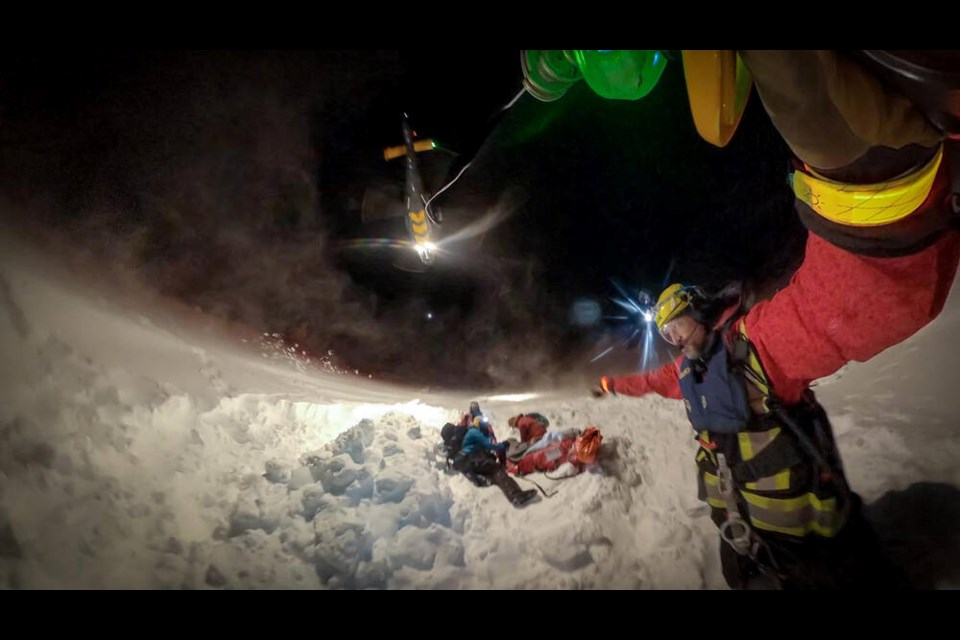North Shore Search and Rescue battled gusts of wind, deep snow and poor visibility to pluck an injured skier off a remote North Island mountain on Sunday night.
Team leader Mike Danks said the rescue on Mount Cain, about 75 kilometres northwest of Sayward, was a complicated event due to the conditions and the tricky location of the fallen skier on the edge of a bowl.
“It was in avalanche terrain that was uncontrolled, so it was determined it wasn’t worth the risk of trying a [land] rescue and putting several people at risk,” said Danks.
He said crews had to assess the weather, which included wind gusts of up to 100 kilometres per hour, downdrafts and clouds as darkness fell.
He said North Shore responded with Richmond-based Talon Helicopters, including a pilot and hoist operator, along with a physician and two night-trained hoist technicians. Due to the timing of the rescue in the darkness of early evening, pilots and lifters used night-vision goggles.
Initially the team had difficulty accessing the area due to clouds and winds and landed at the Mount Cain parking lot to discuss a plan and wait for a weather window.
After 20 minutes, Mount Cain ski patrol members who were at the scene treating the skier radioed that the area had cleared.
Danks said to maintain the helicopter’s hover power amid downdrafts, the flight crew removed all unnecessary equipment and flew to the accident site with only a hoist operator and one technician on board.
The Mount Cain Ski Patrol had already provided first aid and placed the female skier on a spine board.
The skier was lifted out to the mountain’s parking lot, where she was assessed by North Shore’s emergency physician and then flown to Campbell River Hospital.
Danks said the skier’s injuries “were not of a critical nature … otherwise she would have been taken to Nanaimo hospital.”
The rescue was the second night-time lift in four days for North Shore Rescue, whose crews lifted a skier from Cypress Mountain on Dec. 31.
Danks said the rescue was a first for the team on Mount Cain. The mountain, known for its deep snow, is popular with North Island skiers, but not well known outside the area because of its remote location, about 400 kilometres northwest of Victoria.
“For us, hoisting at night is something we can do and it is something that can save lives.”



